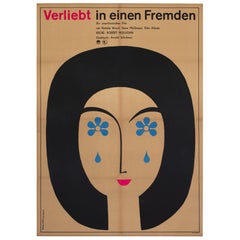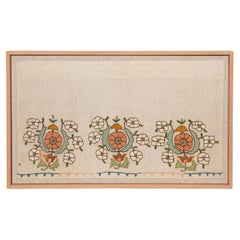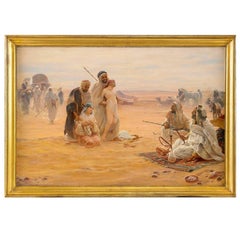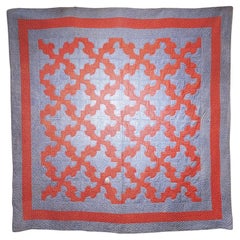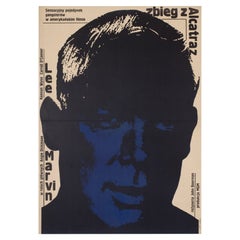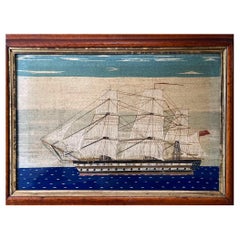Fabric Decorative Art
20th Century German Fabric Decorative Art
Paper, Linen
Late 19th Century Turkish Folk Art Antique Fabric Decorative Art
Silk
Early 20th Century Swiss Islamic Fabric Decorative Art
Giltwood, Canvas
1880s American Folk Art Antique Fabric Decorative Art
Cotton
20th Century Polish Fabric Decorative Art
Linen, Paper
Mid-19th Century English Folk Art Antique Fabric Decorative Art
Wool
2010s Nepalese Art Deco Fabric Decorative Art
Wool
2010s British Mid-Century Modern Fabric Decorative Art
Wool
1950s British Brutalist Vintage Fabric Decorative Art
Canvas
20th Century American Folk Art Fabric Decorative Art
Fabric, Thread, Wood
Late 19th Century American Barbizon School Antique Fabric Decorative Art
Wood, Canvas
19th Century French Rococo Antique Fabric Decorative Art
Masonite, Gesso, Canvas, Giltwood
1970s Spanish Modern Vintage Fabric Decorative Art
Stainless Steel
20th Century French Fabric Decorative Art
Linen, Paper
21st Century and Contemporary Turkish Mid-Century Modern Fabric Decorative Art
Wool, Cotton
20th Century American Adirondack Fabric Decorative Art
Canvas, Paint
1830s French Louis XVI Antique Fabric Decorative Art
Canvas, Paint
Mid-19th Century Chinese Qing Antique Fabric Decorative Art
Silk, Plexiglass
20th Century French Fabric Decorative Art
Linen, Paper
20th Century Persian American Colonial Fabric Decorative Art
Wool
Early 20th Century Italian Fabric Decorative Art
Canvas
1980s Italian Modern Vintage Fabric Decorative Art
Fabric, Wood
19th Century Italian Renaissance Revival Antique Fabric Decorative Art
Canvas
Late 19th Century Balkan Folk Art Antique Fabric Decorative Art
Wool, Cotton
20th Century French Fabric Decorative Art
Linen, Paper
Early 20th Century Turkish Folk Art Fabric Decorative Art
Silk
Late 20th Century French Art Deco Fabric Decorative Art
Brass
20th Century Anglo Raj Fabric Decorative Art
Fabric, Wood
20th Century French Fabric Decorative Art
Linen, Paper
20th Century Fabric Decorative Art
Cotton
20th Century Persian American Colonial Fabric Decorative Art
Wool
20th Century French Aubusson Fabric Decorative Art
Wool, Cotton, Paper
Early 20th Century French Art Nouveau Fabric Decorative Art
Metal
Late 18th Century English Tudor Antique Fabric Decorative Art
Silk, Thread, Glass, Giltwood
20th Century French Fabric Decorative Art
Linen, Paper
20th Century French Fabric Decorative Art
Linen, Paper
Early 20th Century Fabric Decorative Art
Silk
1960s Unknown French Provincial Vintage Fabric Decorative Art
Wool, Silk
Mid-19th Century Uzbek Folk Art Antique Fabric Decorative Art
Silk
Mid-18th Century Japanese Antique Fabric Decorative Art
Silk, Wood
19th Century Uzbek Antique Fabric Decorative Art
Silk
20th Century Irish Victorian Fabric Decorative Art
Canvas, Giltwood
19th Century Chinese Qing Antique Fabric Decorative Art
Silk
1970s American Bohemian Vintage Fabric Decorative Art
Wool, Jute
21st Century and Contemporary Uzbek Suzani Fabric Decorative Art
Cotton, Silk
Late 19th Century Persian American Colonial Antique Fabric Decorative Art
Wool
20th Century French Fabric Decorative Art
Linen, Paper
20th Century American Fabric Decorative Art
Linen, Paper
Early 20th Century Uzbek Folk Art Fabric Decorative Art
Silk
Late 19th Century Indian Antique Fabric Decorative Art
Cotton
20th Century French Fabric Decorative Art
Linen, Paper
Late 19th Century American Antique Fabric Decorative Art
Canvas
Late 19th Century Italian Baroque Revival Antique Fabric Decorative Art
Canvas, Wood
1890s English Late Victorian Antique Fabric Decorative Art
Canvas, Wood, Giltwood
2010s Fabric Decorative Art
Wool
20th Century Hungarian Fabric Decorative Art
Canvas, Wood, Paint
20th Century American Fabric Decorative Art
Linen, Paper
19th Century Italian Other Antique Fabric Decorative Art
Gesso, Canvas, Wood
Mid-20th Century English Other Fabric Decorative Art
Canvas, Wood
1880s English Folk Art Antique Fabric Decorative Art
Wool
Read More
At Colonial Williamsburg, Everything Old Is New Again
With the help of a new director, the Virginia institution's folk art and decorative arts museums are undergoing extensive upgrades.
New York’s Hirschl & Adler Showcases the American Workmanship and Design Panache of Neoclassical Treasures
The gallery's latest exhibition proves that museum-quality pieces entice and inspire, whether in traditional or more modern interiors.
